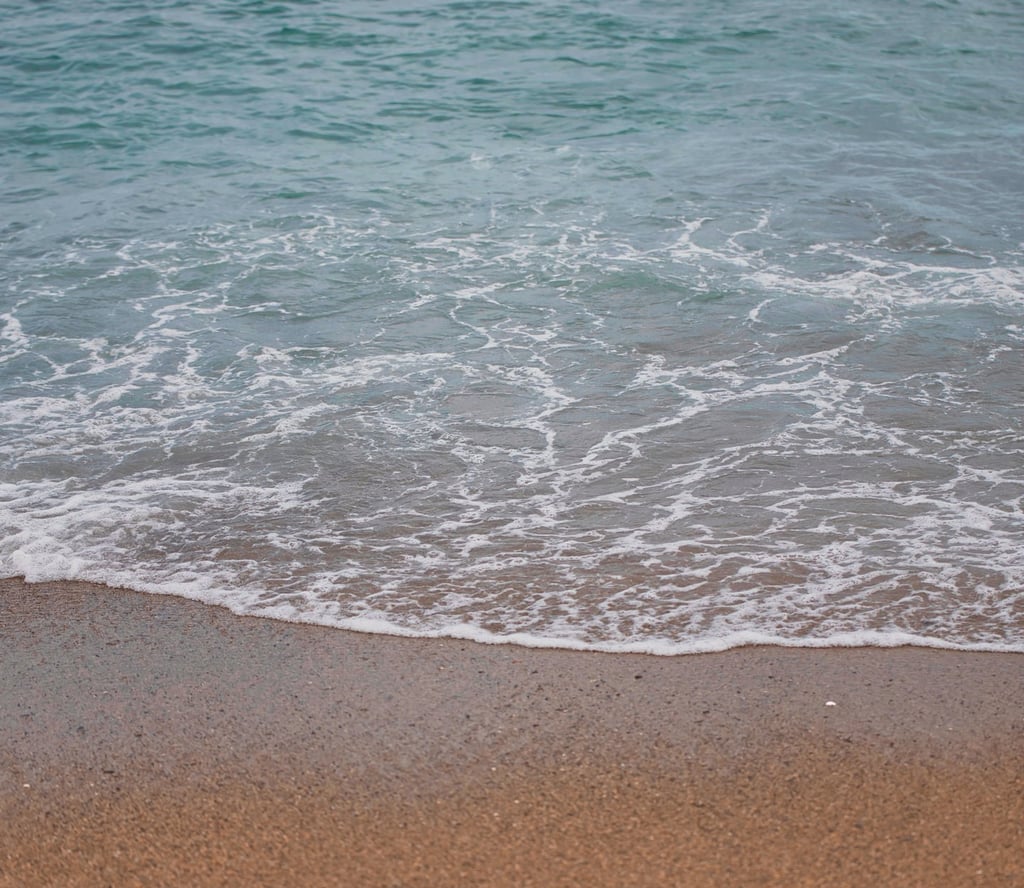The Paradox of Survival: How Escaping Holds Us Back from Thriving
Survival mode tricks you into thinking you’re in control. But the truth is, you’re just running. And running is exhausting.
5/13/20256 min read


I’ve often noticed that people have an easier time articulating what they don’t want, rather than what they do. It’s a tendency that seems almost universal, one I’ve seen not only in others but also in myself. It’s easy to reject an idea or say no to something when it’s presented to us, but when we’re asked to choose or to define what we truly desire, it’s like staring into a void. The possibilities feel infinite, and instead of clarity, we’re left with a kind of haze. Why is this? The more I think about it, the more I realise it’s deeply rooted in survival instincts and the way our past experiences shape our minds.
For some, the answer lies in trauma. A person who has lived through abuse, neglect, or chronic instability becomes attuned to danger, rejection, and pain. Their brain adapts, focusing on what they need to avoid. Survival comes first, and in survival mode, thriving becomes an abstraction, a luxury that feels out of reach. I’ve spoken to people whose entire worldview has been shaped by escaping harm. They can recount with vivid detail the situations, people or environment they want to get away from, but when asked what they want to move toward, they hesitate. It’s as if they’ve never had the chance to think about it. And maybe they haven’t.
This phenomenon isn’t limited to extreme situations like trauma or abuse. It shows up in daily life too, in subtle and sometimes mundane ways. Think about the classic dinner debate with a partner. When asked what you want to eat, you might say you don’t know. But the moment they suggest Thai food, you know you don’t want that. It’s easier to reject one specific option than to sift through countless possibilities and land on one definitive choice. Our minds aren’t naturally wired to create options where there is no structure. They function better when working against something tangible, a definitive idea to push back on or refine.
I find this fascinating because it reveals something about how our brains work. We often think of indecision as a kind of paralysis brought on by too many options, but this is different. Here, the issue isn’t that you’re overwhelmed by choices presented to you; it’s that you’re expected to generate options from nothing. That requires a kind of mental energy and creative thinking that can feel daunting when you’re not used to it.
Why might this happen? Part of it could be a lack of practice in making choices, particularly meaningful ones. If you’ve spent much of your life following someone else’s lead or adhering to strict rules, you might not have had many opportunities to discover what truly resonates with you. There’s also the fear of getting it wrong, of choosing poorly and regretting it later. The fear of consequences can make decision-making feel perilous, even when the stakes are low.
Another possibility is that our brains struggle with a lack of structure. When you’re given a list of options, your task is to evaluate and compare them. But when you’re asked to create your own list, you’re starting from scratch. That’s a different cognitive challenge altogether, and one that many of us aren’t well-equipped for.
There’s also the question of self-awareness. To make choices that align with who you are, you need a strong sense of self. That sense develops through experience, through trying new things, taking risks, and reflecting on what feels good or right to you. If you haven’t had the chance to explore the world in this way, or if fear has held you back, you might struggle to articulate what you want because you simply don’t know. And how could you?
And yet, there’s a paradox here. The very act of survival can limit our ability to thrive. A person in survival mode, whether because of trauma, scarcity, or simply the inertia of not knowing what they want, learns to be reactive rather than proactive. They leap from one unpleasant situation to another, often driven by the urgent need to escape. In doing so, they become masters of avoidance but novices in creation. The focus stays on what they don’t want because that feels immediate, urgent, and familiar. What they do want, however, remains elusive, distant, and untested.
The image that often comes to my mind is that of a flower seed. To grow into a vibrant, blooming flower, the seed needs the right conditions: sunlight, water, fertile soil. Imagine a seed landing on a carpet. It quickly learns that it can’t grow there. The fibres are suffocating, and there’s no moisture or sunlight. So it does everything within its power to move, metaphorically speaking, and to escape the carpet. But where does it go? Maybe it ends up on a patch of broken glass, because, well, it’s not the carpet. The glass is sharp, cold, and unyielding. It escapes again, this time to a pile of plastic, because, again, it’s not glass. The plastic is smoother, perhaps, but it’s still inhospitable. Over time, this seed might develop an impressive knowledge of what doesn’t work, but it never gets the chance to thrive. It never finds the conditions that would allow it to bloom. That’s what it’s like to live in survival mode for too long.
This cycle of escape is, at its core, about survival. And survival is vital. It keeps us alive through the hardest moments of our lives. But it’s not enough on its own. Survival doesn’t teach us how to live fully, how to thrive. It doesn’t teach us how to identify the conditions that allow us to bloom. It teaches us what we need to escape from, not what we need to escape to.
When I think about this in the context of mental health, it strikes me how often we get stuck in this pattern. We become experts at avoiding harm but novices at seeking joy. Even when we’re no longer in survival mode, those patterns persist. It’s hard to shift from a mindset of “not that” to one of “this, please.” Recovery and healing are crucial, of course, but so is growth. It’s not enough to escape what hurts us; we also need to move toward what nourishes us.
Our brains crave clarity and structure, even if they chafe against it. When we are presented with infinite possibilities, we freeze. It’s not paralysis from fear but from overwhelm. There’s a difference between having too many choices and having no framework for making those choices. The former is about abundance, while the latter is about uncertainty.
But it’s not just a lack of structure that holds us back. It’s also a lack of self. To know what nourishes us, we have to know ourselves, what feels good, what feels right, what makes us come alive. And self-knowledge doesn’t come easily. It requires a willingness to throw ourselves into the world, to experiment, to risk failure and regret. That takes courage, opportunity, and sometimes sheer luck. For those who’ve experienced trauma or scarcity, those things can feel impossibly far away.
When I think about this phenomenon, I can’t help but feel a sense of grief for the lost opportunities to grow, not just in others but in myself also. How many times have I, too, chosen the safer path, the one that let me avoid discomfort or pain but didn’t bring me closer to what I truly wanted? How many times have I, like that seed, escaped one inhospitable place only to find myself in another? And how many of us are trapped in this cycle, endlessly moving away from what we don’t want but never toward what we do? It’s easy to see why so many of us get stuck in survival mode, even when life is relatively calm. The habits and thought patterns that kept us safe don’t disappear just because the threat has. They linger, shaping how we see the world and ourselves.
But what happens when we never transition out of survival mode? What happens if we spend our whole lives avoiding pain but never pursuing joy? I think about the seed again, bouncing from one unsuitable environment to another. Imagine its frustration. Imagine the longing it must feel, not even knowing what it’s longing for.
And this brings me to the heart of the matter. Survival is undeniably the foundation of thriving. When the foundation is built, it is then time to discover and embrace the conditions that allow us to flourish. Sometimes, that could mean continuing therapy when the crisis is over. Knowing what you don’t want could be an instinct, but figuring out what you do wanted having the courage to pursue it is an act with intention and purpose.
That courage doesn’t come easily. It’s easier to reject than to choose, to say “not that” than to say “this.” But if we want to thrive, we have to do the harder thing. We have to start asking ourselves what nourishes us, what makes us feel alive. And we have to be willing to seek it out, even if it feels unfamiliar or risky.
The beauty of this process is that it’s never too late to begin. No matter how much time you’ve spent in survival mode, there’s always the possibility of growth. The seed, given the right conditions, can still bloom. And so can we.
